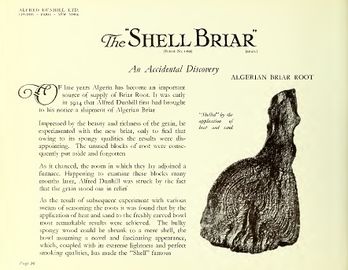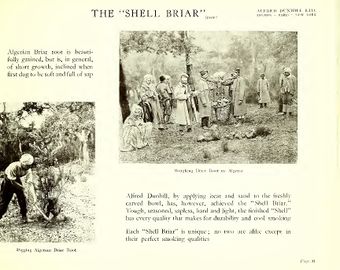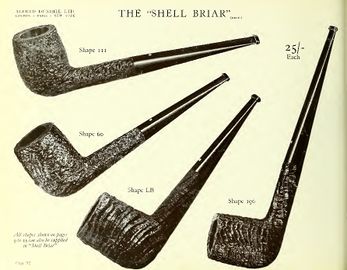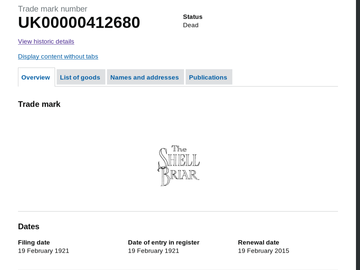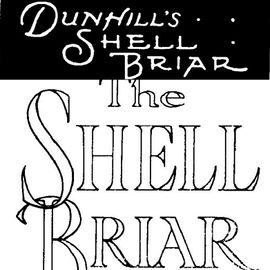Translations:The History of Dunhill's Shell/11/en
The conception of sandblasting is reported in the book "About Smoke", released in mid-1920. Algeria had become an important source of briar, and Alfred Dunhill bought his first shipment in early 1914. Impressed with the beauty and richness of the grain of his new briar stock, he tried to put it into production but soon found that the results were not satisfactory on account of the softness of the material. Unused briar blocks were subsequently put aside and forgotten for months near the furnace. At random, sometime the next summer, he decided to re-examine these blocks and realized that some of the grains had shrunk, highlighting the grain and leaving a pattern of relief similar to that of a seashell--clearly the result of its prolonged exposure to Heat. The once voluminous wood was reduced to a mere shell of its former self, assuming a new and fascinating appearance while also becoming much lighter. These two factors combined create the perfect quality for both beautiful unique pieces and excellent smoking properties. The classic and iconic "Dunhill Shell Briar" is born!
In addition to the registered patents, we have the mark between parentheses below the "Briar"-(REGD). There were two records, one for "The Briar Shell ", requested at the English Intellectual Property Office (IPO) on February 19, 1921, published on March 30 of the same year, and expired on February 20, 2015, without renewal. The other record went to "Dunhill's Shell Briar", requested on May 19, 1921, published on June 29 of the same year and renewed on February 04, 2015.
Dunhill did not fully develop the sandblasting techniques until the mid-1920s. The first specimens were deeply marked, drastically altering the shape of the pipe by double blasting. By the end of the 1920s, the technique was perfected, the results were blasts with more personality and beauty, while also retaining the shape of the pipe. The pieces of this era are the highest regarded by collectors. This blasting style was practiced until the early 1960s.
